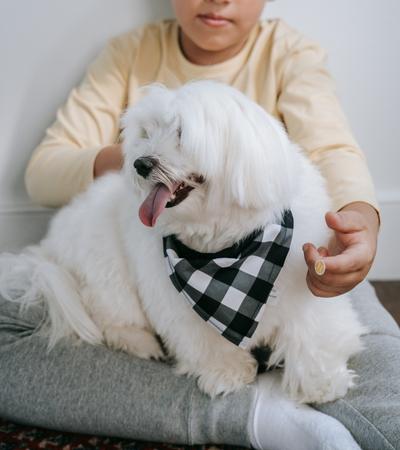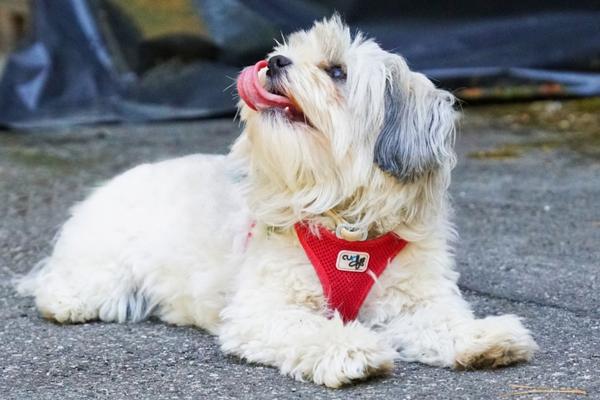Maltese vs Havanese – What’s the Difference?
Are you thinking about introducing a small, allergy-friendly dog into your life? Both the Maltese vs Havanese are affectionate canine companions and a good choice for people with allergies.
If you’re trying to decide between these two tail-waggers, this article is a must-read. We share all the information you need — temperament, grooming, and exercise requirements, plus the all-important price tag — to help you choose the best pooch for you.
Maltese vs Havanese Contents
Maltese vs Havanese Quick Comparison Chart
Havanese Dog vs Maltese — The Breeds
Maltese vs Havanese Size
Maltese vs Havanese Temperament
Maltese vs Havanese Training
Maltese vs Havanese Price
Maltese vs Havanese Shedding
Maltese vs Havanese Grooming Requirements
Maltese vs Havanese Exercise
Conclusion
Maltese vs Havanese FAQs
Maltese vs Havanese Quick Comparison Chart
Havanese Dog vs Maltese — The Breeds
The exact origins of the Maltese are unknown, but we do know that they’ve been companion canines since ancient Egypt. And, while their heritage is a little hazy, Maltese dogs are strongly connected with the island of Malta.
These dogs are tiny but share the protective side of the largest watchdogs around. They will let you know if they don’t like you and they’re known to bark a lot at strangers. Although, it’s not down to aggression, they’re just nervous of faces they don’t know.
Best known for their flowing, snow-white silky coat with a similar texture to human hair. You can clip a Maltese into a ‘puppy cut,’ but nothing beats their natural, show-stopping, floor-length coat.
Is the Maltese for Me?
If you’re thinking about introducing a loving yet playful lapdog to your home, the Maltese could be your perfect pooch. Maltese dogs are super friendly and devoted to their trusted humans. They’re affectionate and happy, and being a good companion dog is literally part of their DNA!
However, Maltese dogs can love their humans a little too much and can become very protective of their family. This can lead to frequent yappy episodes. So, if you want a quiet life, you may wish to rethink.
The Maltese is an ideal hypoallergenic apartment dog — a small dog, suitable for small spaces. And, whether you’re a senior citizen, live on your own, or have a large family, Maltese dogs will slot right in and love you with all of their heart.
That said, these dogs are better suited to pet parents who don’t venture too far from the family home.
Pros
- Hypoallergenic.
- Doesn’t need much exercise.
- Friendly nature.
- Compact size.
Cons
- Has a stubborn streak.
- Can bark a lot.
- Requires a lot of grooming.
- Not suitable for young children.
The shy yet loving Havanese originated from Cuba. Part of the Bichon-like family, this pooch’s purpose is purely companionship. The Havanese is a descendant of the Blanquito de la Habana, which translates to ‘The White Dog of Havana.’
Havanese dogs are an adaptable and loving breed. That said, they can have a shy and anxious side and may take a little while to warm up to the company of strangers.
These dogs are fun to be around, have small-dog charm, and are intelligent enough to be easily trained. Your loyal Havanese will make a noisy yet tiny watchdog, but their cute appearance is unlikely to scare anyone away.
Is the Havanese for Me?
The Havanese is a people-dog and needs constant company. Hence, they won’t be a good fit if you’re gone all day. On the flip side, if you want an affectionate and devoted lapdog, the Havanese is the perfect dog for you!
Given their size, they’re suitable for apartments or small-space living. And, their high trainability makes them a good fit for first-time owners.
However, when it comes to grooming, you’ll need to make sure you have enough time in your day to brush their long and silky coat.
Pros
- Only needs a small amount of daily exercise.
- Small but not too fragile.
- Protective watchdog.
- Hypoallergenic coat.
Cons
- Suffer from separation anxiety.
- Can bark a lot.
- High maintenance grooming needs.
Maltese vs Havanese Size
At first glance, the Maltese versus Havanese can look quite similar. But let’s take a closer look.
Maltese
The Maltese is a teeny tiny toy group dog and stays looking like a cute puppy dog throughout its entire life.
- A fully grown Maltese shouldn’t weigh more than 7 pounds. Maltese dogs are very short — adults only grow to approximately 7 to 9 inches tall.
Havanese
An adult Havanese dog won’t take up much space in your home either.
- Havanese weigh anywhere between 7 and 13 pounds — potentially up to double the weight of the Maltese.
- Growing to approximately 8.5 to 11.5 inches in height — the Havanese is slightly taller.
Maltese vs Havanese Temperament
So, what’s the difference between Havanese and Maltese when it comes to their temperament? While both of these bow-wows are loyal lap dogs, they don’t share the exact same personality.
Maltese
The Maltese is a tiny dog with a big heart. This breed possesses a gentle temperament and is a compassionate canine companion. Although playful and charming, the Maltese may initially bark a lot at strangers.
This breed loves their humans so much and always wants to be in the company of their family. Hence, these dogs can suffer from separation anxiety and may become extremely distressed if left on their own for any length of time.
Havanese
These dogs love their pet parents just as much as the Maltese, but they have a bit more of an independent and shy side. They also make excellent mini watchdogs, although their barking may be due to nerves and anxiety around new people.
The happy Havanese can be sociable, but loves nothing more than some quality one-to-one time with their beloved human.
Havanese dogs adore giving and receiving attention and are happiest when they’re the center of everyone’s admiration. They aren’t quite as laid back as the Maltese, but they’re pretty mellow compared to many other small dog breeds.
Maltese vs Havanese Training
Training is an essential part of being a good pet parent. How well you train your pooch will influence how well they behave when inside and outside of the home.
Maltese
Maltese dogs are very intelligent and can be easily trained. In fact, these dogs are so smart, they’ve been known to excel in agility and obedience sports.
However, just keep a lookout for their stubborn side! Maltese are known to be a little challenging at times — positive reinforcement works best with this bow-wow.
Havanese
Just like the Maltese, Havanese dogs are reasonably easy to train. However, this breed can also be a bit strong-willed — small dog syndrome. You’ll need to be patient and consistent with your training methods.
Havanese dogs are not so good at picking up new tricks and agility skills, but they can be well-behaved and sociable little pooches.
Like the Maltese, reward-based training gains the best response from the Havanese. They’re sensitive creatures, so the gently-does-it approach is preferable.
Maltese vs Havanese Price
If you’re eager to get an idea about money matters. This is what each breed will set you back:
- Havanese — cost anywhere between $1000 to $1500.
- Maltese — are a little more expensive, with a price tag between $1000 and $2500.
Maltese vs Havanese Shedding
If you have dog allergies, you’ll be pleased to hear that both are hypoallergenic. While neither breed is going to leave your home covered in fur, does one shed less than the other?
Maltese
The Maltese has a gorgeous white, silky single coat that rarely sheds. These dogs have hair, not fur, so it’s similar to humans in both texture and shedding. You can expect your Maltese to lose some fur, but it isn’t enough to be a problem for people with allergies.
Havanese
Unlike the Maltese, the Havanese has a double coat. Yet, this pooch’s hair is also long, and they only shed minimally. Havanese dogs are another hypoallergenic small breed, and they make awesome allergy-friendly furry friends.
To sum it up.
As the larger dog, it could be argued that the Havanese will leave more fur around your home. The truth is, neither of these dogs shed enough to have you running the vacuum around several times a day! Or, more importantly, they’re unlikely to cause an issue with your dog allergies.
Maltese vs Havanese Grooming Requirements
If you’re considering a long-coated dog, you should be prepared to put in the time for grooming. The luscious coats of the Havanese and Maltese won’t stay looking good without some TLC.
Brushing
Both the Havanese and Maltese need to be brushed daily — floor-length coats can become tangled easily.
Some pet parents choose to keep their Havanese or Maltese coat short by getting them clipped regularly by a groomer.
Bathing
Maltese dogs should be bathed once a week to keep their coat clean. The long coat can get dirty around the bottom, so regular baths are needed to keep it that stunning signature white color.
The Havanese won’t need to be bathed as often, but they will need their coat washed with doggy shampoo occasionally.
Nails and Teeth
All dogs can be prone to dental issues, the Havanese and Maltese are no exception. Brush your dog’s teeth two or 3 times a week with a doggy-specific toothpaste.
Both breeds need their nails trimmed regularly. These tiny dogs have fast-growing claws and will need them cut every few weeks.
Maltese vs Havanese Exercise
Little dog, little exercise, right? Well, these small dogs don’t need as much walking as the Labrador or Siberian Husky, but they do need to stretch their legs every day.
Havanese
The Havanese loves to lounge and enjoys cuddles far more than long walks in the park. Around 30 minutes a day — split into two brisk walks — should be sufficient.
You can also meet their activity needs, through playtime in the house. But don’t forget they need bathroom breaks too.
Maltese
Maltese dogs are also cuddly companion dogs and love to take pride of place on their owner’s lap. Like the Havanese, roughly half an hour should be adequate for your Maltese. You can split this into two or however works for you.
But, be careful not to over-exercise your Havanese or Maltese, over exertion can be dangerous for your pooch. If you notice your dog is tired or panting a lot, you may need to carry them home!
Conclusion
Are you struggling to decide which small hypoallergenic dog is the best for you? If you’re trying to choose between the Havanese or Maltese, we hope this comparison article has helped you find the perfect breed for you.
If you want a dog for the show course, Maltese are slightly easier to train and pick up agility sports skills faster. But if you’re looking for a small dog that’s a little more robust, the Havanese would be the perfect choice.
That said, regardless of whether you choose the Maltese vs Havanese, you’ll have a loving and loyal furry best friend.
Maltese vs Havanese FAQs
Is a Havanese a Good First Dog?
Yes, the Havanese is a playful and affectionate lap dog. This breed is intelligent and easy to train, they make great dogs for first-time pet parents. The Havanese will get on well with all members of the family. But, due to their small size, they should be protected from boisterous children.
Can Havanese Be Left Alone?
Havanese are companion dogs and love the company of their owners. These dogs don’t like to be left alone for a long time. Separation anxiety is a possibility. If you need to leave them, be sure to expose them to short periods of alone time from an early age.
Do Maltese Bark a Lot?
Yes, Maltese dogs are frequent barkers and have a bad rep for being vocal little dogs. This breed makes great tiny watchdogs as they’re known to bark excessively at strangers. However, if you teach your Maltese the ‘quiet’ command from a young age, you can keep their barking under control.
Are Maltese High Maintenance?
No, for exercise requirements — their little legs don’t need to walk too far.
Yes, for grooming needs. The long coat requires daily brushing and as it’s all-white, it picks up dirt quickly — hence frequent baths will be necessary.
How Can You Tell the Difference Between a Maltese and a Havanese?
The easiest way to tell these two breeds apart is that the Maltese only comes in white, while the Havanese is found in a range of colors. Their coat texture is also different — the Maltese is straight and silky, whereas the Havanese can be curly, straight, or wavy.
Are Havanese High-Maintenance Dogs?
Havanese could be considered high maintenance if you decide to keep their full-length coat. However, their exercise needs are not demanding — they’re lap dogs after all.







